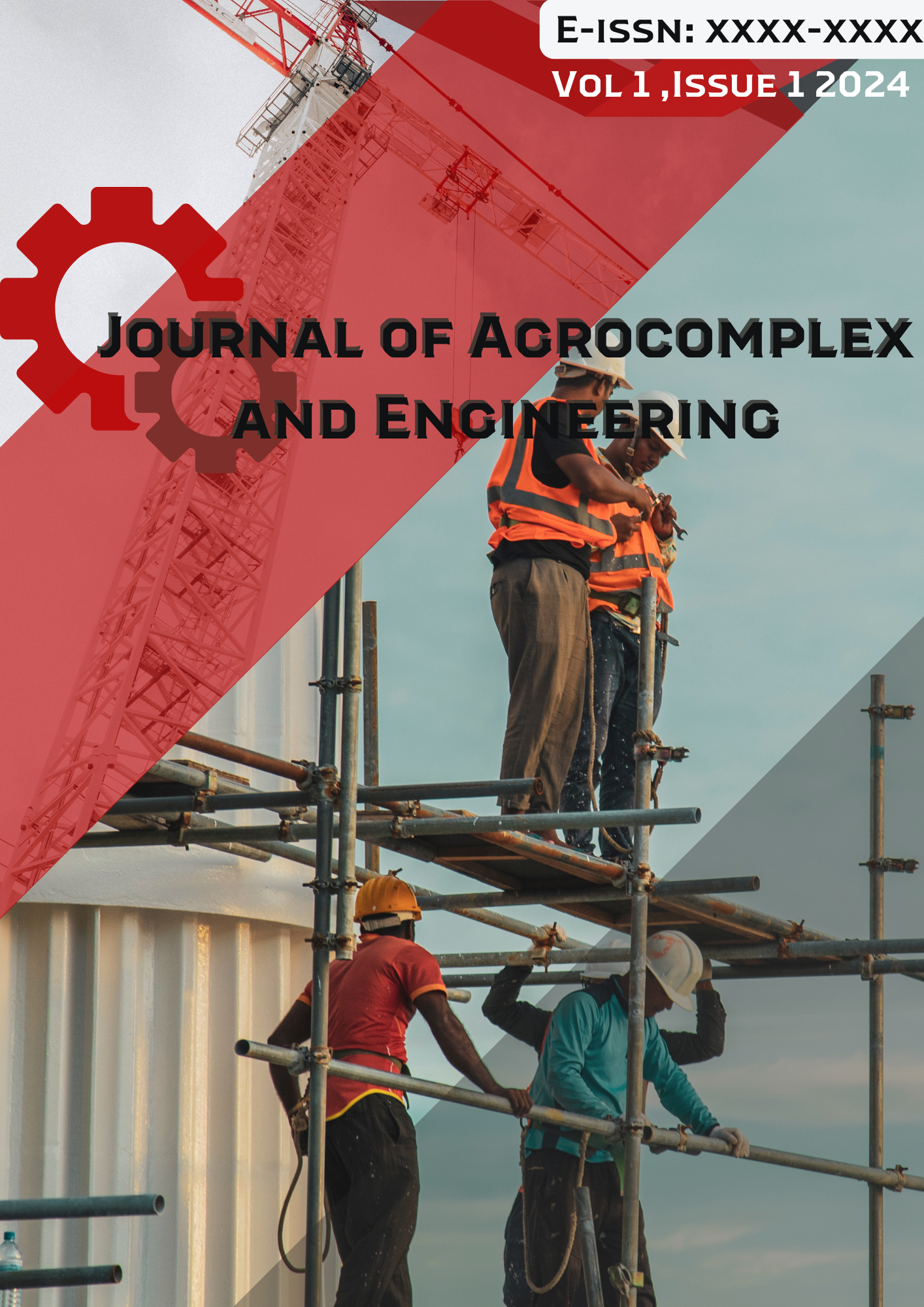The Effect of Fermentation Technology on the Quality of Fish Feed from Agricultural Waste
Keywords:
Fermentation, Agricultural waste , Rice bran , Cassava peelAbstract
Purpose: This study aimed to assess the impact of microbial fermentation on the nutritive value of rice bran and cassava peel and to test its effects on growth, feed use, and gut traits of Nile tilapia.
Subjects and Methods: Two agro-waste types, rice bran and cassava peel, were fermented with Saccharomyces cerevisiae and Aspergillus niger. Proximate traits, fiber, and anti-nutrient levels were tested pre- and post-ferment. A feeding trial used 240 Nile tilapia (mean weight 12.5 g) in triplicate groups for 8 weeks. Diets included: control, unfermented rice bran, fermented rice bran, and fermented cassava peel. Growth, feed intake, feed gain ratio, and protein digest were recorded. Gut histology was done to test villus traits.
Results: ermentation raised crude protein by 22–35% and cut fiber by up to 40%. Anti-nutrient levels fell to safe limits. Fish fed fermented rice bran grew faster (SGR 2.10%/day), had better feed ratio (1.25), and higher protein digest (89%) than control (SGR 1.45%/day, FCR 1.65, digest 74%). Fermented cassava peel gave moderate gains. Gut villus height was higher in fish fed fermented diets (270–285 µm) than in control (210 µm) or unfermented group (215 µm).
Conclusions: Fermentation improved agro-waste quality, enhanced growth, raised feed use, and supported gut health in tilapia. Fermented rice bran was most effective, showing promise as a low-cost, safe, and eco-friendly feed input. This method may reduce reliance on fishmeal and support sustainable aquaculture.
References
Anderson, J. L., Asche, F., Garlock, T., & Chu, J. (2017). Aquaculture: Its role in the future of food. In World agricultural resources and food security: International food security (pp. 159-173). Emerald Publishing Limited. https://doi.org/10.1108/S1574-871520170000017011
Aya, F. A. (2017). Utilizing alternative ingredients in aquafeeds for sustainable aquaculture. Fish for the People, 15(3), 37-44.
Boyd, C. E., D'Abramo, L. R., Glencross, B. D., Huyben, D. C., Juarez, L. M., Lockwood, G. S., ... & Valenti, W. C. (2020). Achieving sustainable aquaculture: Historical and current perspectives and future needs and challenges. Journal of the world aquaculture society, 51(3), 578-633. https://doi.org/10.1111/jwas.12714
Glencross, B. D., Baily, J., Berntssen, M. H., Hardy, R., MacKenzie, S., & Tocher, D. R. (2020). Risk assessment of the use of alternative animal and plant raw material resources in aquaculture feeds. Reviews in Aquaculture, 12(2), 703-758. https://doi.org/10.1111/raq.12347
Hiloidhari, M., Bhuyan, N., Gogoi, N., Seth, D., Garg, A., Singh, A., ... & Kataki, R. (2020). Agroindustry wastes: biofuels and biomaterials feedstocks for sustainable rural development. In Refining biomass residues for sustainable energy and bioproducts (pp. 357-388). Academic Press. https://doi.org/10.1016/B978-0-12-818996-2.00016-8
Jekayinfa, S. O., Orisaleye, J. I., & Pecenka, R. (2020). An assessment of potential resources for biomass energy in Nigeria. Resources, 9(8), 92. https://doi.org/10.3390/resources9080092
Kumar, V., Sinha, A. K., Makkar, H. P., De Boeck, G., & Becker, K. (2012). Phytate and phytase in fish nutrition. Journal of animal physiology and animal nutrition, 96(3), 335-364. https://doi.org/10.1111/j.1439-0396.2011.01169.x
Lieke, T., Meinelt, T., Hoseinifar, S. H., Pan, B., Straus, D. L., & Steinberg, C. E. (2020). Sustainable aquaculture requires environmental‐friendly treatment strategies for fish diseases. Reviews in Aquaculture, 12(2), 943-965. https://doi.org/10.1111/raq.12365
Norman, R., Crumlish, M., & Stetkiewicz, S. (2019). The importance of fisheries and aquaculture production for nutrition and food security. Revue scientifique et technique (International Office of Epizootics), 38(2), 395-407. https://doi.org/10.20506/rst.38.2.2994
Paul, I. U., Oyewole, O. T., & Kizito, M. I. (2021). Review of the Utilization of Waste Biomaterial Resources of Selected Food Crops: Rice, Cassava, Cocoa, Sorghum and Oil Palm.
Reverter, M., Tapissier‐Bontemps, N., Sarter, S., Sasal, P., & Caruso, D. (2021). Moving towards more sustainable aquaculture practices: a meta‐analysis on the potential of plant‐enriched diets to improve fish growth, immunity and disease resistance. Reviews in Aquaculture, 13(1), 537-555. https://doi.org/10.1111/raq.12485
Rico, A., Satapornvanit, K., Haque, M. M., Min, J., Nguyen, P. T., Telfer, T. C., & van den Brink, P. J. (2012). Use of chemicals and biological products in Asian aquaculture and their potential environmental risks: a critical review. Reviews in Aquaculture, 4(2), 75-93. https://doi.org/10.1111/j.1753-5131.2012.01062.x
Subasinghe, R. (2017). World aquaculture 2015: a brief overview. FAO Fisheries and Aquaculture Report, (1140). https://doi.org/10.1111/j.1753-5131.2008.01002.x
Thazeem, B., Umesh, M., Sarojini, S., Allwyn Vyas, G., Adhithya Sankar, S., Sapthami, K., ... & Stanly, L. M. (2022). Developments in feeds in aquaculture sector: Contemporary aspects. In Aquaculture science and engineering (pp. 35-78). Singapore: Springer Nature Singapore. https://doi.org/10.1007/978-981-19-0817-0_2
Trushenski, J. T., Kasper, C. S., & Kohler, C. C. (2006). Challenges and opportunities in finfish nutrition. North American Journal of Aquaculture, 68(2), 122-140. https://doi.org/10.1577/A05-006.1
Downloads
Published
Issue
Section
License
Copyright (c) 2025 Journal of Agrocomplex and Engineering

This work is licensed under a Creative Commons Attribution-ShareAlike 4.0 International License.






